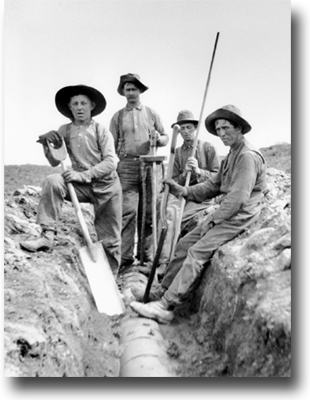Central Prairie - Draining the Prairie

Courtesy Mrs. Geneva Sweet
In the late 19th century, parts of the prairie were too wet to be farmed. Some of these areas were grazed. Some were cut for wild hay. Water holes edged with sedges, cattails, and sawgrass were common. They provided habitat for reptiles, amphibians, and migrating birds.
Dr. A.W. Herre wrote a vivid description of the effect of draining these areas for agriculture:
“Every spring and fall the prairie was covered with water, so that the whole countryside was a great lake ... swarms of water birds filled the air... vast flights of ducks dashed to and fro and great flocks of wild geese sped swiftly across the sky... "
The advent of tile drainage early in the 1880s completed the transformation of the prairie into farm land and brought in many more people... the ducks and geese stopped coming, for there was neither water nor food to attract them. Migratory flocks of snipe and plover continued to come for a couple of decades, but their numbers had dwindled by...1900. The crawfish and bullfrogs disappeared...and the prairie chickens were destroyed by the combined efforts of the plow and shotgun. __A.W. Herre, 1940